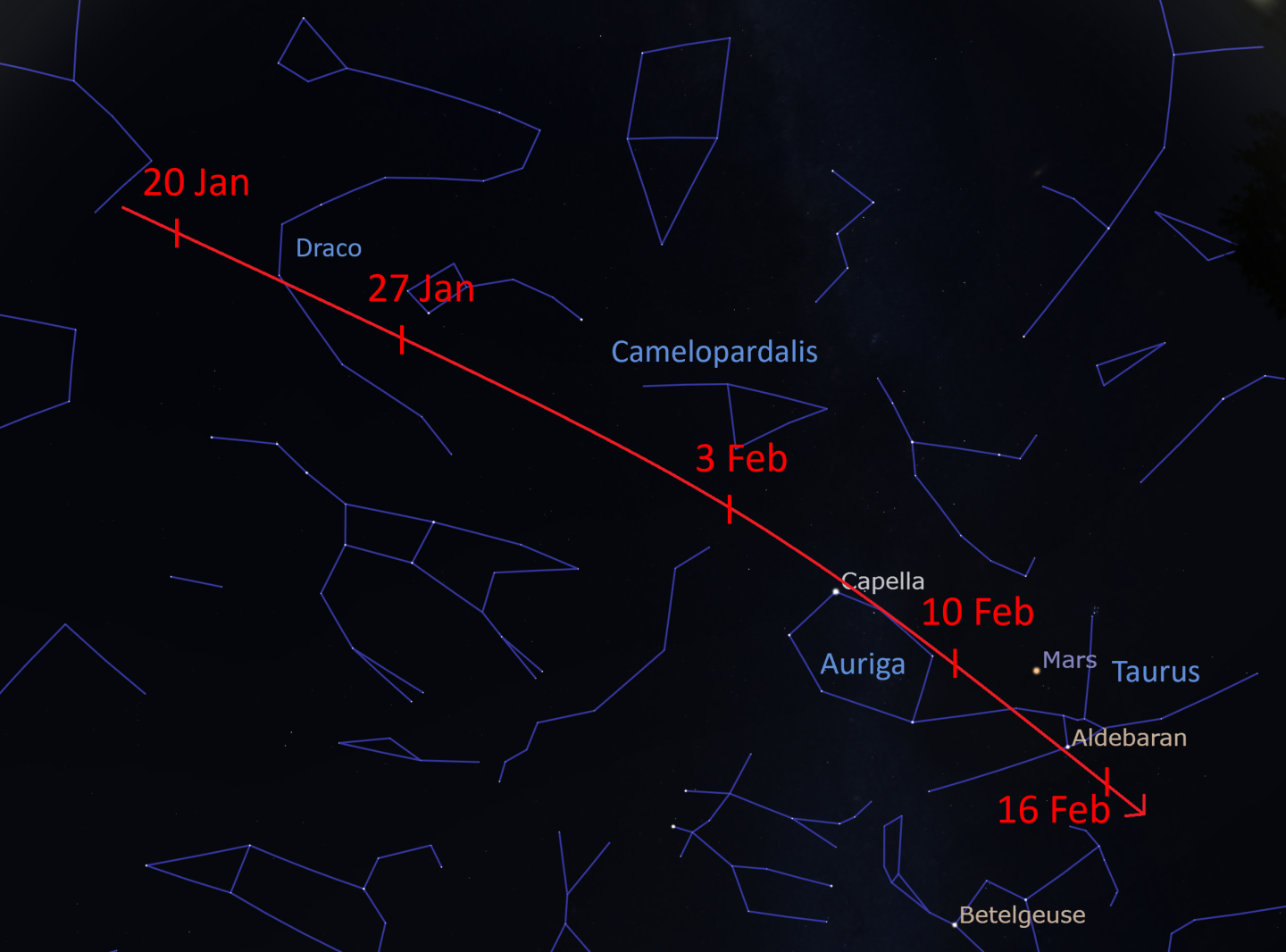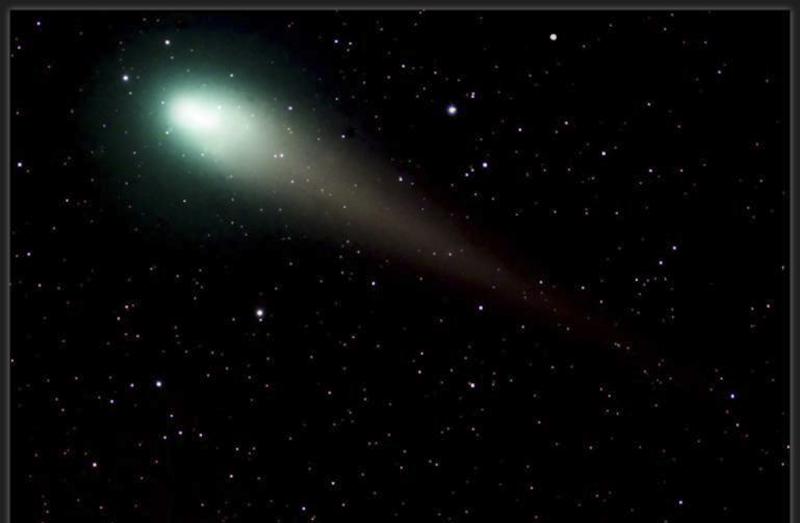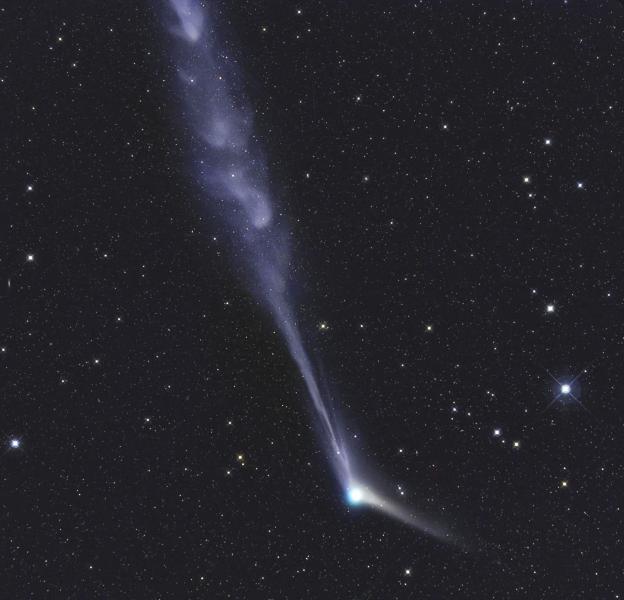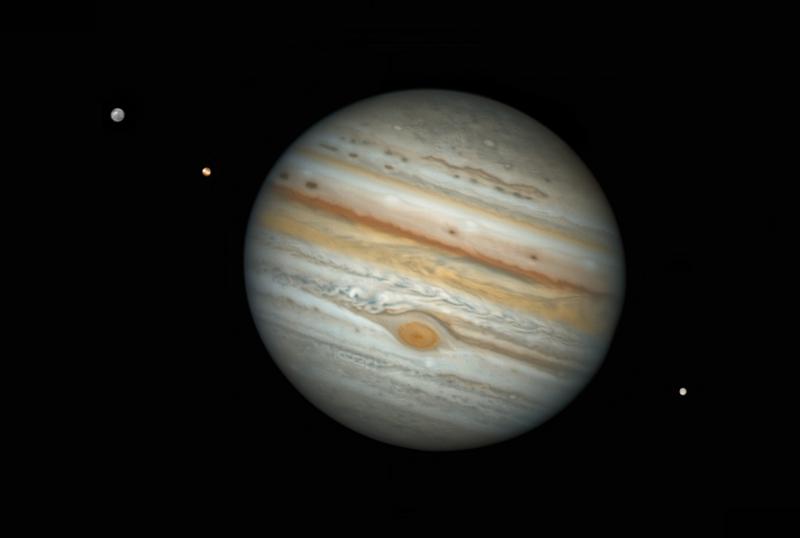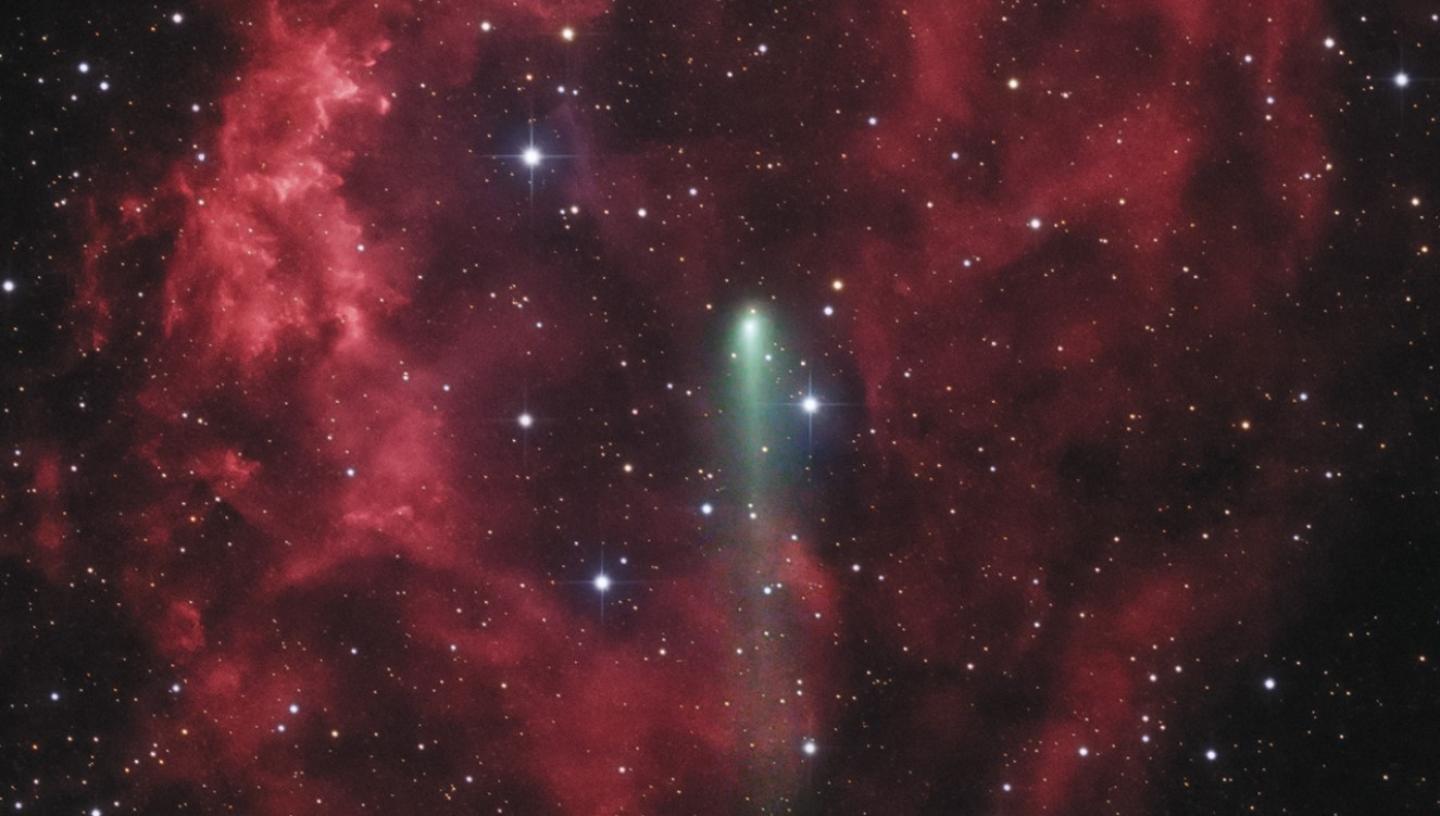
Discover how to see this once-in-a-lifetime comet, which might be visible to the naked eye under dark skies.
Comet C/2022 E3 (ZTF), also being referred to as the 'Green Comet', is already being hailed as the best comet of 2023.
Last visible from Earth during the Stone Age, the comet, which made its closest approach to the Sun on 12 January, will make its closest approach to Earth on Wednesday 1 February.
From the northern hemisphere, the comet is already visible in the night sky using a telescope or some binoculars.
However, as it gets brighter and closer, the comet is already reported to be visible to the naked eye against very dark skies, making this potentially an exciting event for anyone without equipment keen to see a once-in-a-lifetime comet.
Read on to discover more about the green comet and how to see it for yourself.
What is Comet C/2022 E3 (ZTF), and where did it come from?
The comet is believed to come from the very outskirts of the solar system in the Oort Cloud, an unobserved area estimated by scientists to contain more than a trillion icy objects.
The green comet was first spotted in March 2022 at the Zwicky Transient Facility in California, which is why the acronym ZTF features in its name.
It made its closest approach to the Sun on 12 January 2023. After rounding the Sun, the comet continued to grow brighter towards the end of January.
Comet C/2022 E3 (ZTF) will be closest to Earth on 1 February. This will also be the moment the comet appears at its brightest, and currently it is expected to reach a brightness magnitude of +5.4. That means it will be visible to the naked eye.
In fact, the green comet has already been reported to be brighter than +6, with some comet-spotters reportedly seeing it with the naked eye from places with very dark skies ahead of its closest approach.
The comet looks like a faint green blob or smudge in the sky. This green glow is a result of UV radiation from the Sun lighting up the gases streaming off of the comet’s surface.
It's worth noting however that comets can be unpredictable, and it’s hard to say with accuracy how bright the comet will be or what it will look like ahead of time.
How to see the green comet in the northern hemisphere
If you use a telescope or binoculars, the comet will be easily visible in the night sky from 12 January to after its closest approach to Earth.
From mid-January, visibility of the comet will be best in the pre-dawn hours, whilst towards the end of the month and start of February it will also be visible from the evening onwards.
However, the comet is best viewed after midnight, when it reaches its highest point in the sky.
There are few different ways to find out where in the night sky Comet C/2022 E3 (ZTF) will appear. If you use a stargazing app, you can use it to find the exact location of the green comet in the sky. Be aware though that some apps may not be updated with the comet's location, so you may have to try a few different ones.
The comet moved from the constellation Corona Borealis on 12 January, then travelled up through Boötes and Draco before passing through Ursa Minor towards the end of January.
When it passes near Earth in February, the green comet will be in the constellation of Camelopardalis.
After its closest approach, the green comet will move through Auriga and end up in Taurus mid-February. The comet will dim over the month as it moves away from us, and the time that it will be up in the sky during the night will get shorter and shorter.
View our range of binoculars and telescopes
How to see the green comet in the southern hemisphere
After its closest approach to Earth on 1 February, the comet will then be visible from the southern hemisphere.
It will start to fade in brightness as it heads away from us, and scientists are still trying to work out whether Comet C/2022 E3 (ZTF) will ever return to Earth.
Green comet viewing tips
Check there will be clear-ish skies, choose your spot so that you’ll be able to see the comet from your vantage point and elevation, and wrap up very warm before heading out to see the green comet.
Allow your eyes to adapt to the darkness for at least 15 minutes so that they become sensitive in the dark.
Try not to look at your mobile or any other bright device when attempting to look for the comet. If you're using a stargazing app, switch on the red night vision mode.
You could also try taking a long exposure photo of the green comet on your phone: even without specialist equipment, this can sometimes pick up things that you can’t see with your eyes.
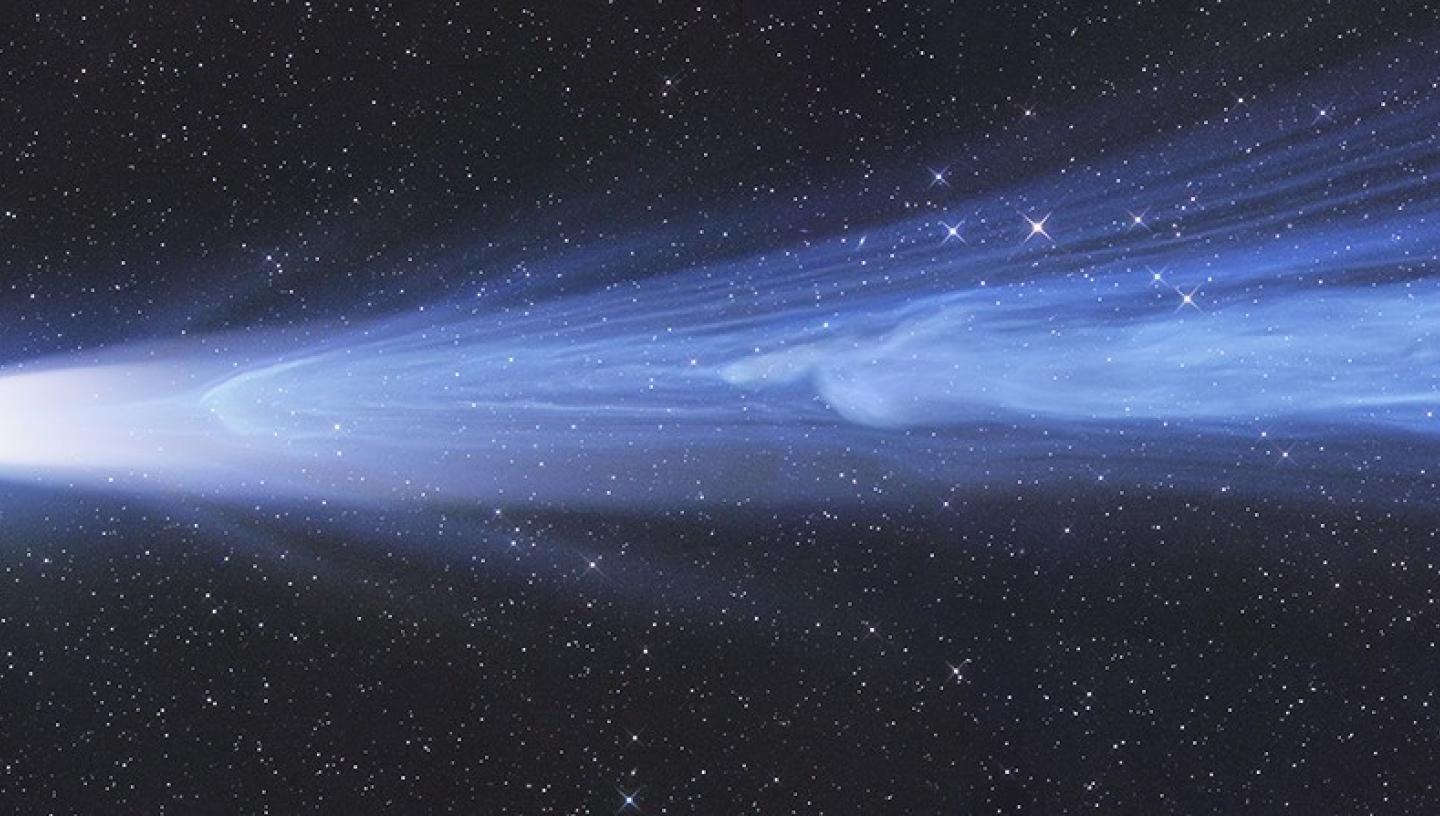
Astronomy Photographer of the Year
Main image: Cosmic Rose by Lionel Majzik - Astronomy Photographer of the Year 2022
